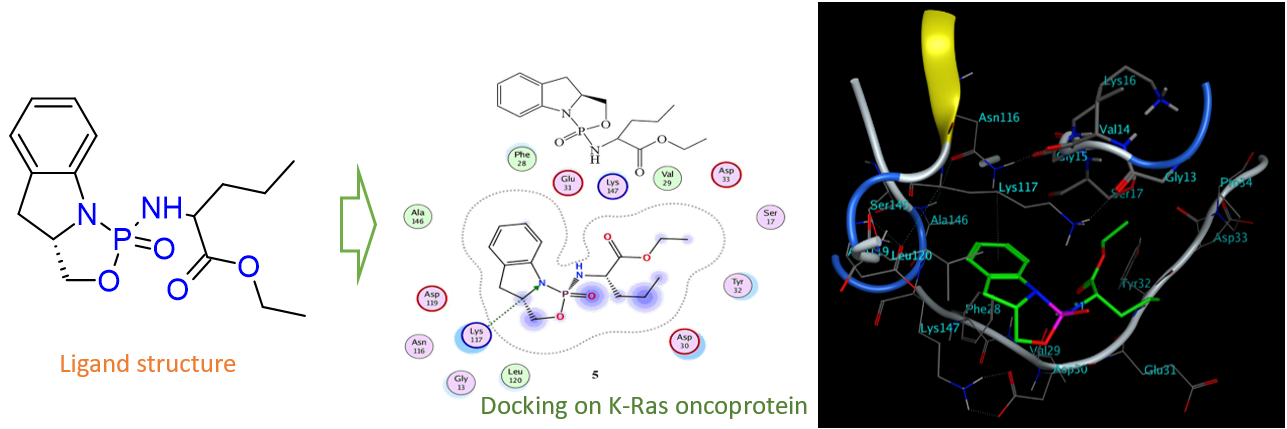Molecular Docking Studies of 3a,4-dihydro-3H- [1,3,2] oxazaphospholo [3,4-a]Indole-1-oxide derivatives for Anticancer activity

Keywords:
3a,4-dihydro-3H-[1,3,2] oxazaphospholo[3,4-a]indole-1-oxide derivatives, Lipinski's Rule of Five, In silico docking, K-Ras oncoprotein, Anticancer activityAbstract
This study evaluates eight novel 3a,4-dihydro-3H-[1,3,2]oxazaphospholo[3,4-a]indole-1-oxide derivatives (1-8) for their potential as drug candidates. Lipinski's Rule of Five and Topological Polar Surface Area (TPSA) analysis suggest favourable properties for drug-likeness, pharmacokinetics, and potentially high intestinal absorption with estimated absorption rates above 80% for most compounds. These findings are promising for their development as medications. Furthermore, we investigated the anticancer potential of these compounds using computer simulations. The simulations showed interactions between the compounds and a protein called K-Ras, a target in various cancers. The simulations revealed promising interactions to the protein, particularly for compound 5 which exhibited the strongest binding affinity. Overall, this study highlights the promise of these compounds for their potential as both drugs and anticancer agents. Further research, including cell-based and animal studies, is warranted to validate these initial findings.
URN:NBN:sciencein.jmc.2024.697
Downloads
Published
Issue
Section
URN
License
Copyright (c) 2024 S. Ibraham Khalivulla, Uma Ravi Sankar Arigala, BV Kiran Kuamr Althurthi

This work is licensed under a Creative Commons Attribution-NonCommercial-NoDerivatives 4.0 International License.
